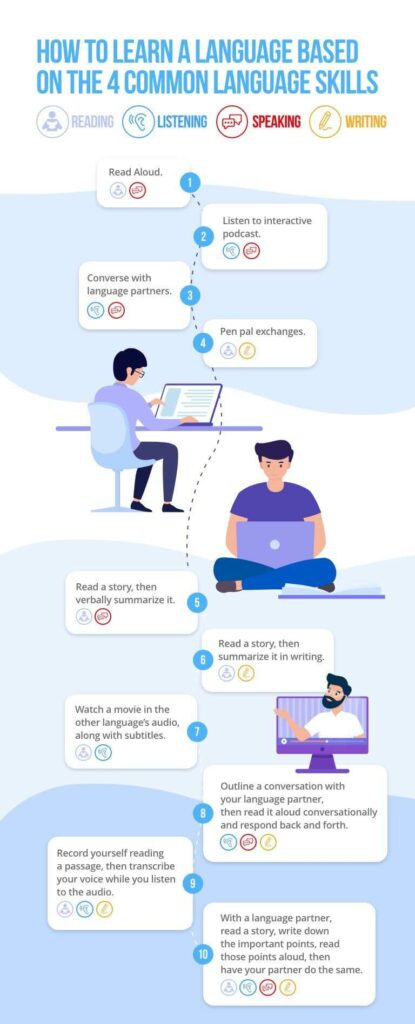
You don’t have to be teaching an ESL (English as a second language) classroom to encounter non-native speakers in the course of your career. Pretty much all teachers encounter ESL students eventually, which is why these four tips for teaching English to non-native speakers will come in handy as you help them assimilate into your classroom and American society.
Use visual aids
Pictures and other visual aids are extremely helpful because non-native speakers do not have the same reference points as native speakers. The more pictures, diagrams, PowerPoint slideshows and videos you can use to connect concepts to words, the better the students will do.
Keep the pictures age-appropriate. An elementary student will appreciate cute cartoon images, but an adult may prefer pictures of adults. You may need to make your own visual aids by cutting out pictures from magazines or printing pictures you find online.
Keep it simple
Avoid complexity as you begin teaching students English as a second language. Start with texts that feature basic sentence structure, word order and verb tenses, with few irregular verbs. Use simple vocabulary and do not progress to more complex rules of grammar until the students grasp the basics. ESL Gold recommends moving from basic sentence structure to sentences with simple verbs but subordinate phrases and articles, then to more complex verbs, clauses and hypotheticals.
Avoid long lectures
ESL students may experience poor lecture comprehension. That means you need to vary your teaching structure to combine short lectures with lots of interaction and hands-on training.
For those times when you do have to lecture, deploy visual aids to improve comprehension. If you have a projector, put the outline of what you are saying up for the students to see as you teach. Use pictures, videos and diagrams to help them visualize what you are talking about. This will help improve their comprehension as you teach.
Make the best use of oral communication
One of the best tips for teaching English to non-native speakers is to rely heavily on oral communication. The more you get your students talking to you and to each other–in English–the better their overall comprehension will to be.
Group work is a great way to encourage oral communication. Once your students understand English well enough to communicate a bit, put them into groups or pairs to read, communicate and converse. The more they practice, the better they get at using the English language . This often makes them feel less intimidated when talking with fellow students.
Use the 4 common language skills
Reading, writing, listening, and speaking are four common areas of any language. Most students will have basic mastery of these skills and they can be utilized to build proficiency in a language.
Here are some language-learning activities for students:
- Read aloud
- Listen to an interactive podcast
- Converse with language partners
- Pen pal exchanges
- Read a story, then verbally summarize it
- Watch a movie in the other language’s audio, along with subtitles
- Outline a conversation with a language partner, then read it aloud conversationally and respond back and forth
- Record yourself reading a passage, then transcribe your voice while you listen to the audio
- With a language partner, read a story, write down the important parts, read those parts aloud, then have your partner do the same

From LanguageTrainers.com
Remember, when teaching English to non-native speakers, the goal is less to get them to learn the rules of English grammar and more to get them to be able to read, write and speak a foreign language. These tips for teaching English will help you get far as you try to help these students. You can also check out a TESOL Master’s program or certification if want additional training for teaching English to speakers of other languages.
Categorized as: Tips for Teachers and Classroom Resources
Tagged as: Language Arts